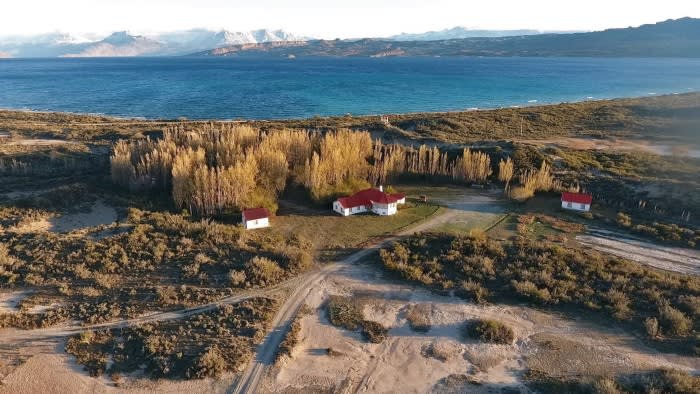Patagonia's Rewilding: Where Dancing Grebes & Painted Hands Tell a New Story

The hooded grebe, a critically endangered bird endemic to Patagonia, is famous for its flamboyant courtship dance. It's a performance worthy of a zoological Oscar, a tango on water with sudden head turns, dramatic direction changes, chest bumping, neck bobbing, and a belly flop. This unusual bird, along with the desolate beauty of Patagonia, has sparked a quiet revolution in the region, prompting a reassessment of the land and creating new economic opportunities.
Patagonia, once a land of hope where people dreamed of building a new world at the end of the world, is now reclaiming its natural identity. The vast spaces, long empty roads, and sweeping winds evoke a melancholic charm, a sense of the past intertwining with the present.
The iconic Ruta 40, a road running the length of Patagonia's spine, is a magnet for travellers. Yet, it's the less famous Ruta 41 that offers a truly breathtaking experience. Driving through a savage uninhabited country, the gravel road winds through fairytale forests, opens to vistas of ethereal mountains, and leads to water meadows where horses graze. The solitude is profound, a stark contrast to the bustling world beyond.
One such place is the Posadas valley, where two lakes, Lago Posadas and Pueyrredón, lie nestled in baked hills. The Lagos del Furioso inn, a family-run lodge nestled on the isthmus between the lakes, exudes a charm that feels like a bygone era. Its painted wooden cabins, bathed in sunlight, offer stunning mountain views and a sense of peace that's hard to find.
The lodge serves as a gateway to the larger story of Patagonia's transformation. In the evenings, conversations with Gregorio Cramer, the lodge's owner, unveil the history of the region, from the explorers who charted its landscape to the settlers who carved out vast estancias for sheep grazing. This was once the vision for Patagonia: a future built on large-scale livestock farming.
However, the fate of these estancias, once symbols of European settlement, is now uncertain. The decline of the wool industry, overgrazing, and the waning appeal of the gaucho lifestyle have left many estancias abandoned. The land, once exploited for its resources, is starting to reclaim its natural balance.
Enter Rewilding Argentina, a conservation organization working to restore Patagonia's ecological integrity. The group has spearheaded the creation of Parque Patagonia, a 182,000-hectare reserve formed from purchased and leased former ranches. The park, straddling Ruta 40, showcases a different vision for Patagonia's future. Fences have been removed, trails and camping areas established, and wildlife surveys conducted. Rewilding Argentina has also reintroduced species, like the huemul deer, that were once lost from the landscape.
The park's centerpiece is La Cueva de las Manos Pintadas, a prehistoric art gallery adorned with handprints from indigenous people who lived in the region thousands of years ago. These "negatives," created by placing hands on the rock and blowing paint over them, are a testament to the human presence that existed long before European settlement.
Parque Patagonia is not just about conservation; it's about redefining economic opportunities for the region. While the estancias struggled, the park provides employment to locals and generates income that is reinvested in the community. It represents a shift away from unsustainable practices and towards a model that prioritizes both ecological restoration and human development.
While the fate of the hooded grebe remains uncertain, with its low reproduction rate and the presence of introduced predators, the puma's return is a sign of hope. Parque Patagonia, with its blend of natural beauty and innovative conservation strategies, offers a glimpse into a future where Patagonia can thrive both ecologically and economically. It's a story of change, of rewilding, and of a region embracing its past to forge a new path for its future.





